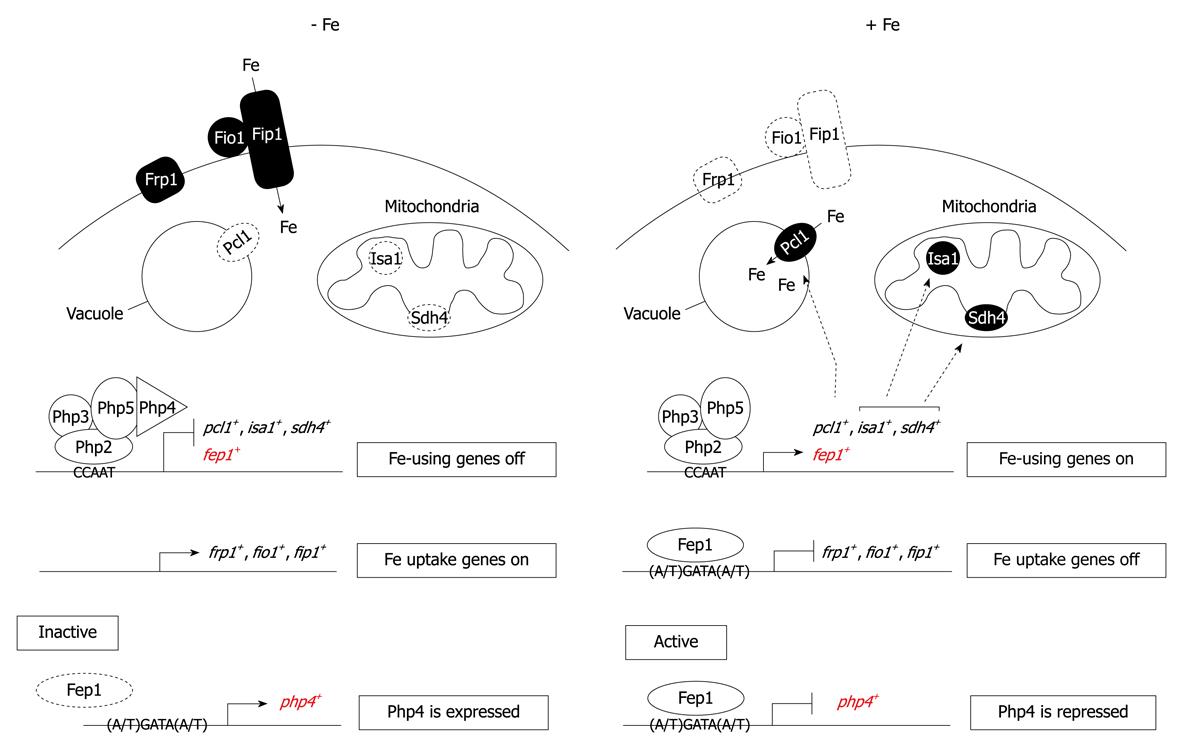Copyright
©2010 Baishideng Publishing Group Co.
World J Biol Chem. May 26, 2010; 1(5): 196-200
Published online May 26, 2010. doi: 10.4331/wjbc.v1.i5.196
Published online May 26, 2010. doi: 10.4331/wjbc.v1.i5.196
Figure 2 A proposed transcription model for an “iron economy”.
Under low iron supply conditions, Fep1 cannot bind to DNA and php4+ is expressed. Once biosynthesized, Php4 interacts with the Php2/Php3/Php5 heterotrimer to mediate repression of genes that encode iron-storage (Pcl1) and iron-containing (Sdh4 and Isa1) proteins, as well as the fep1+ gene. Conversely, under iron-replete conditions, Fep1 binds DNA and, with the aid of Tup11 and Tup12, turns off php4+ gene expression. This inactivation of php4+ enables genes involved in storage and utilization of iron to be expressed via the Php2/Php3/Php5 heterotrimeric CCAAT binding factor.
- Citation: Labbé S. Simon Labbé’s work on iron and copper homeostasis. World J Biol Chem 2010; 1(5): 196-200
- URL: https://www.wjgnet.com/1949-8454/full/v1/i5/196.htm
- DOI: https://dx.doi.org/10.4331/wjbc.v1.i5.196









